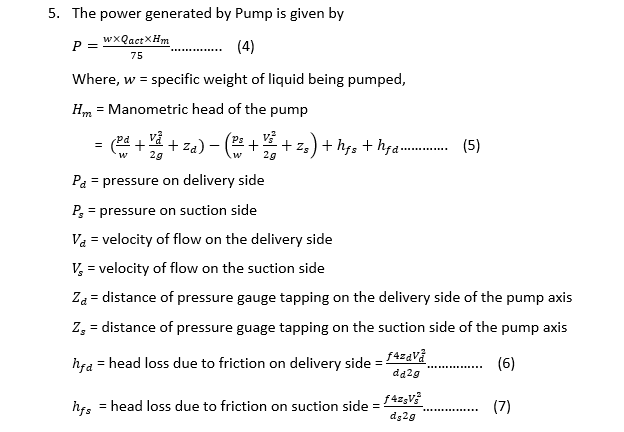Performance Characteristics of Single Acting Reciprocating Pump
Procedure –
- Note down the diameter (D) and stroke length (L) of the piston, wattmeter constant k, distances Z d and Z s of the pressure gauges from the pump axis
- Start the motor and open the delivery valve fully
- Measure the discharge Q actual
- Note down the pressure gauge reading P d and P s and also wattmeter reading X
- Measure the number of strokes occurring in a given time and hence obtain the speed of the piston in RPM
- Change the opening of the delivery valve
- Repeat steps 3 to 6 for atleast ten different openings of the delivery valve
Formulae
Under ideal conditions the discharge in case of double acting reciprocating pump is given by:

Calculations
Perform the following calculations for each opening of the delivery valve :

Advantages of Reciprocating Pump
The advantages of Reciprocating Pump include the following.
• No priming required
• Pressure and flow rate changes have little effect on performance
• Reciprocating pumps generally operate at higher efficiencies than other pumps, generally reaching levels of 85% or more efficiency
• A reciprocating pump provides a steady, unchanging flow rate
Disadvantages of Reciprocating Pump
The disadvantages of the Reciprocating Pump include the following.
• Pulsating flow
• Typically handles only low flow rates
• High operating and maintenance cost
• Not able to handle dirty water
